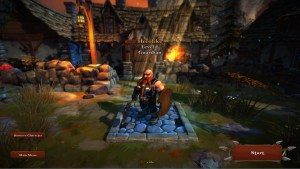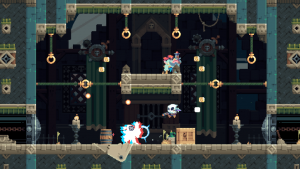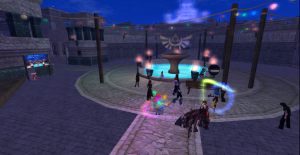Game design is one of those things that gets highly debated all the time, by both game developers and players. Everyone has theories on why something works, why something else doesn’t, and what you should do.
With that in mind, clearly, it’s safe to assume that we’re only adding more opinion to the truckload. That being said, we’ve accumulated tips and tricks that have proven effective time and time again. It might be in your best interest to at the very least consider them on your journey.
How Game Design Works
Creating a game that is enjoyable and grabs the attention of players is quite hard. This is a major challenge for most game developers right now because there’s more to a game than just a story – it has to be about killer gameplay as well.
Design mechanics
Most of the games we play nowadays are designed to be played, and not seen. People need a good game mechanic hook. On the other hand, games that only have a single mechanic can be tiresome and boring as time passes. Combining mechanics is important, otherwise the results might not be as impressive as you might want.
Create a prototype
If you want your game to be fun, you need to make a prototype and see how the mechanics add up in practice. Theorizing is a good thing, but it’s a whole extra level to actually see the game played, as a prototype. It makes the whole experience a lot more appealing and extraordinary as well. Keep that in mind at all times!
Ensure that the game is fun
The game has to be fun, so don’t overcomplicate things. Add some mechanics along the way to maintain interest, but don’t overdo it. In the end, game design is all about having a fun, exciting, intuitive-to-play game. Play with the prototype as much time as possible in order to ensure a very high quality, otherwise the results might not be as good as expected.
Always be testing
Try playing the game on your own and tackle the prototype directly. It can be very hard to actually determine problems or to make the game fun without playing it yourself, not to mention that this way you can iron out the bugs as well.
Iterate, iterate, iterate
A lot of play testing is needed in order to iron out the bugs. You need to ensure that the game mechanics are as solid. Make sure that you take into account game feel, as this will make the games more juicy and fun.
All these steps are necessary if you want your game to be fun and playable, but they’re only a start! There are many other things you can do. For instance, think about how to captivate your audience.
Engaging Players
We’ve all been guilty of this: graced by a bundle or seasonal sale, we sit down with the intention of giving each game in our giant stack a fighting chance. Some games become fast favorites, but as we all know, many others are left with mere minutes of playtime in our logbooks. For these games doomed to the list of things to be uninstalled, it can sometimes be a failure of first impressions that causes a player to abandon them. In particular, what happens before the game, in this case the opening cinematic, can intensely color a player’s impressions and expectations of a game.
The Role of Cinematics in Video Games
The video game cinematic (VGC) in many ways has been used as a means to hide a game’s weakness. An over-the-top character introduction or elaborate fight scene are in some cases an attempt to mask poor in-game character writing or a failure in the core game design to deliver on the “cool factor” found in the VGC. It is worth saying that by its very nature, a VGC is pre-rendered—it is static and oftentimes pulls the player right out of gameplay—and finds itself juxtaposed against an incredibly dynamic and immersive medium. VGCs are to video games what voice over narration is to movies: something to be used sparingly and effectively.
While VGCs are typically found throughout the entirety of a game (just look at any JRPG from the Playstation era), I wanted to place a certain emphasis on the opening cinematic, as it epitomizes what I think of as the chief role of VGCs in games: the establishment of setting. Whether the opening cinematic comes before the title screen or after the player hits “New Game,” the first five seconds can make or break a player’s entire experience with the game.

The All-Important Hook
The first five seconds of an opening cinematic may not make the first five minutes of a a game good, but at the very least, they will allow the cinematic to establish the world the game inhabits by virtue of deterring the player from skipping the VGC altogether. A great hook doesn’t necessarily have to preface the story of the game. If the goal is to establish setting—to get the player in the mood to play the game—then many possibilities open up, from storytelling/folklore to capturing the mood or quirkiness of the game through in-setting media (think the “Vault Boy” from the Fallout series).
If your game is dramatic or full of action, an opening cinematic that starts en media res is a great way to get the player’s heart pumping. Conversely, a game oriented more toward video games as art form may benefit from something that feels subtle or mysterious. By starting with a strong hook, the rest of the cinematic should fall into place and leave a lasting impression on the player.
Great Expectations
What the opening cinematic ultimately does is set the player’s expectations for the game. It can be the foundation upon which the player’s entire experience of the game is built, and thus should be treated as something worth devoting thought and time to producing. The first five seconds of an opening cinematic beget the first five minutes of gameplay, which beget the first five hours of the experience you’re trying to give the player. If the game can’t start strong, then why should the player start it at all?
Retaining Players
Assuming you’ve designed the game in such a way that proves effective, and captivates your audience, it’s time to consider how to retain said audience.
Ever heard of the phrase, “Player retention is the key to success”? When developers focus on engagement and acquiring players organically through word of mouth, social and online discovery, as well as digital store outreach, they’re starting down the right path. Even game marketing and attending events. But that’s just a small piece of the puzzle to creating a successful game. At the end of the day, the number of acquired players won’t matter if they all leave in a span of a few days.
But improving player retention is a science, much like marketing. You have to know what players enjoy, what they don’t, and ideally, what they expect from you. The best way to get your game noticed is by finding out what all these variables are, and combining them into a game.
Luckily, we’ve narrowed the list down at least some with these six surefire ways to improve player retention.
1. Design that Intro!
For starters, take the age-old rule: first impressions matter. Much like when people go on a first date, they want to see something that will make them stay for the long haul. That means developers need to spend more time designing the intro. The title screen, the loading screen, and the first level all make up the player’s first impression of a game.
The objective is to keep it all interesting, but short. No one wants to sit there for ten minutes waiting to finally play. Not being able to run around on your own in the first 3-5 minutes of the game is a major problem. If it’s a long one, at least make it skippable.
And sure, this may affect story a little but that’s not a bad thing. A story can still be engaging without the longest prologue known to man. If anything, this might help your writing be more effective.
2. Rethink Your Tutorial

No One Likes Annoying Tutorials
Next up, those tutorials. Ever played a game where even the most basic of tasks had a tutorial prompt? No one likes that. Forcing a tutorial on players is a great way to lower player retention. It shouldn’t be long, boring, or patronizing. That sets the tone for what’s to come and gives off a terrible first impression.
Find a way to let them know what they absolutely need to know without using a traditional session. Give them crumbs of information here and there as they progress, but don’t overload. The objective here is to create a minimalistic tutorial that puts the player in control and doesn’t overwhelm them with needless information they can figure out themselves.
3. Avoid Backfiring Grinds
Putting it bluntly, backfiring grinds are highly unpleasant. Grinding shouldn’t ever be counterproductive. For instance, as much as we all love Skyrim, there was a major flaw with grinding in that game. Once you got the best gear, you pretty much strutted around. You were invincible!
A game should always remain moderately challenging. There should be a sense of reward after spending hours farming and looting and selling, etc. But it should still pose a decent level of difficulty.
4. Never Rely on Grinding Entirely

Not Too Much Grinding!
In the same token, don’t make the game rely entirely on grinding. There should be some essential rewards here and there to keep the player going. Motivation, if you will. Developers should never design the game in a way that makes players completely “squishy” if they don’t grind 24/7/365.
For instance, Diablo 3 is all about the grinding, but it has a surprising balance too. Starting out, you have to force your way through levels, until roughly level 5-8 before you can create items, or purchase from the merchants. Players don’t have to wait for a decent drop the entire time, they can buy it when needed. In higher levels, even a weak roll on a weapon can be thrown into Kanai’s Cube. There’s also Blood Shards you can use to find a better alternative.
5. Implement Good Community Management
Did you know that a hostile or intimidating MMO community can alienate newcomers? This is an unfortunate truth for developers who desperately need to keep acquiring new players, while improving retention rates. Bad communities pave the way to a fall in popularity.
The best way to avoid this problem is to make sure you implement good community management. Community managers come in all shapes and sizes, depending on the game studio and its mission, but they all serve as the face of the company. Even offline! They strategize social events and opportunities, build strong, healthy communities and help to market the game. They sometimes serve as storytellers, when it comes to managing these game images, oftentimes using stories about real life experiences in the game to connect with new, potential players.
By implementing community management you can count on, the players have more of a chance to enjoy the game you slaved over. The managers will ban people who absolutely don’t need to be playing (repeat offenders), and encourage positive social interaction.
6. Don’t Make Sessions Bare

No Sparse Worlds
Finally, this one is mighty difficult, but it’s a must: don’t make your sessions bare. Each chapter in your game needs to have material. Content is key. If players can walk on by through the level and find a handful of things at best, you need to rework the game.
The problem with this is that the larger your game is, the more tedious this becomes. Smaller worlds with more linear story lines don’t have this problem as much as MMOs or other open world games. This is why generators are often used in these cases, but that can lead to content being forced. There are no shortcuts to doing something right—you just need to do it yourself, preferably with a team of writers who can all take a town, chapter, etc.. Be prepared to invest a lot of time on this.
Takeaways
If it seems like a lot, remember, design is one of those things you’ll spend the better part of your career trying to master. It takes time and experience to get good. Don’t put too much pressure on yourself!
I’d like to give a huge shoutout and H/T to Daniel Doan and Dorian Karahalios for their share of valuable content in this article!
If you enjoyed this article and you’re looking for a marketing partner to help make your game a success story, drop us a line at [email protected] and let’s chat!
